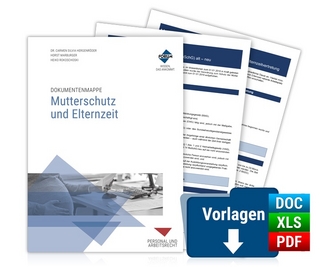
Human Resource Management - International Student Edition
SAGE Publications Inc
978-1-5443-3131-7 (ISBN)
The book includes all of the latest SHRM 2016 Curriculum Guidebook listings, covering every SHRM guide item, including both the SHRM Certified Professional (SHRM-CP) and the Human Resource Certification Institute Professional in Human Resources (PHR) certification exam—a total of more than 210 individual content requirements from the SHRM curriculum guide.
A three-pronged approach—functions, applications, skill development—helps students master the concepts, apply them, and build the skills needed in the workplace. This is supported by self-assessments in each chapter and a Current Trends section, which covers the latest developments in the HR field, particularly trends related to data analytics, social media, ethics, privacy, and working in diverse, global organizations
New to this edition
New Skill Builder exercises allow students to experience HR as they practice making decisions, working in teams, and participating in role-plays.
Assignable SAGE Premium Video (available via the interactive eBook version, linked through SAGE coursepacks) is tied to learning objectives and illustrates HRM in action.
The book is complemented by online resources, featuring a range of tools and materials for lecturers and students, including diagnostic chapter pre tests and post tests, Test banks, Assignable SAGE Premium Video, videos from SAGE Knowledge illustrating Human Resource Management concepts, PowerPoint® slides, Sample course syllabi, Lecture notes, eFlashcards, eQuizzes, and all tables and figures from the textbook.
Suitable for modules on Human Resource Management.
Robert N. Lussier is a professor of management at Springfield College and taught management for more than 35 years. He is a prolific writer, with more than 500 publications to his credit. His articles have been published in the Academy of Entrepreneurship Journal, Business Horizons, Entrepreneurship Theory and Practice, Family Business Review, Journal of Business Strategies, Journal of Management Education, Journal of Small Business Management, Journal of Small Business Strategy, SAM Advanced Management Journal, and several others. He also has a human resources management textbook (with John Hendon) published by SAGE and other textbooks. More than two million people globally have used his textbooks, earning him an unsurpassed national and international reputation as an author and keynote speaker. Dr. Lussier is the founder of Publish Don’t Perish (www.publishdonotperish.com) and through contact, his Publish Don’t Perish: The Top Secrets to Get Published book, and workshops has helped hundreds of institutions and individuals in 80-plus countries get published. His presentations inspire comments like: “Bob explains complex business topics in an easy-to-understand language while keeping his audience engaged and spellbound” (Dr. Raj V. Mahto, professor, University of New Mexico) Dr. Lussier also consults to a wide array of commercial and nonprofit organizations. In fact, some of the material in the book was developed for such clients as Baystate Medical Center, Coca-Cola, Friendly’s Ice Cream, National Institute of Financial Education, Mead, Monsanto, Smith & Wesson, the Social Security Administration, the Visiting Nurse Association, and YMCAs. Dr. Lussier holds a bachelor of science in business administration from Salem State College, master’s degrees in business and education from Suffolk University (AACSB accredited), and a doctorate in management from the University of New Haven (AACSB MBA accredited, prior to doctoral accreditation). John R. Hendon is a seven-time entrepreneur and former director of operations for a $60 million company. He brought his experience and interests to the classroom full time in 1994 and has been a Management faculty member at the University of Arkansas at Little Rock for over 17 years. An active member of the Society for Human Resource Management, he teaches in the areas of Human Resources Management, Strategy, and Organizational Management, and researches in a number of areas in the Management field, specializing in Entrepreneurial research. John is also currently the President of “The VMP Group,” an Arkansas-based business consulting firm. John’s company consults with a variety of businesses on human resources, family business, strategic planning, organizational design, and leadership. He has provided professional assistance in the start-up and operation of dozens of Arkansas and California-based businesses and non-profits, government agencies, and utilities. John holds an MBA degree from San Diego State University and a BS in Education from the University of Central Arkansas.
Chapter 1. The New Human Resource Management Process
Why Study Human Resource Management (HRM)?
HRM Past and Present
The Changing World of HRM
Understanding HR’s Critical Factors
HRM Skills
Line Managers’ HRM Responsibilities
HR Managers’ Responsibilities: Disciplines Within HRM
Resources for HRM Careers
Practitioner’s Model for HRM
Trends and Issues in HRM
Chapter Summary
Chapter 2. Strategy-Driven Human Resource Management
Strategy and Strategic Planning: The Organization and the Environment
Strategic Vision and Mission
Strategy Types and Analysis
Structure
Organizational Culture
An Introduction to Data Analytics and HR Technology
Human Resource Management Systems (HRMS)
Measurement Tools for Strategic HRM
Trends and Issues in HRM
Chapter Summary
Chapter 3. The Legal Environment and Diversity Management
The Legal Environment for HRM and A User’s Guide to Managing People
Major Employment Laws
Equal Employment Opportunity Commission (EEOC)
EEO, Affirmative Action, and Diversity: What’s the Difference?
Sexual Harassment: A Special Type of Discrimination
Religious Discrimination
Trends and Issues in HRM
Chapter Summary
Part II: Staffing
Chapter 4. Workforce Planning: job Analysis, Design, and Employment Forecasting
Workforce Planning: Workflow Analysis
Job Analysis
Job Design/Redesign
Designing Motivational Jobs
HR Forecasting
Reconciling Internal Labor Supply and Demand
Trends and Issues in HRM
Chapter Summary
Chapter 5. Recruiting Job Candidates
The Recruiting Process
Organizational Recruiting Considerations
Internal or External Recruiting?
Challenges and Constraints in Recruiting
Evaluation of Recruiting Programs
Trends and Issues in HRM
Chapter Summary
Chapter 6. Selecting New Employees
The Selection Process
Looking for “Fit”
Uniform Guidelines on Employee Selection Procedures
Applications and Preliminary Screening
Testing and Legal Issues
Selection Interviews
Background Checks
Selecting the Candidate and Offering the Job
Trends and Issues in HRM
Chapter Summary
Part III: Developing and Managing
Chapter 7. Learning and Development
The Need for Training and Development
The Training Process and Needs Assessment
Learning and Shaping Behavior
Design and Delivery of Training
Assessing Training
Talent Management and Development
Trends and Issues in HRM
Chapter Summary
Chapter 8. Performance Management and Appraisal
Performance Management Systems
Why Do We Conduct Performance Appraisals?
What Do We Assess?
How Do We Use Appraisal Methods and Forms?
Who Should Assess Performance?
Performance Appraisal Problems
Debriefing the Appraisal
Trends and Issues in HRM
Chapter Summary
Chapter 9. Rights and Employee Management
Commonly Accepted Employee Rights
Management Rights
Coaching, Counseling, and Discipline
Leadership - and Management
Teams and Organizational Change
Trends and Issues in HRM
Chapter Summary
Chapter 10. Employee and Labor Relations
Labor Relations: A Function of Trust and Communication
Job Satisfaction
Legal Issues in Labor Relations
Unions and Labor Rights
Management Rights and Decertification Elections
Managing Conflict
Negotiations
Trends and Issues in HRM
Chapter Summary
Part IV: Compensating
Chapter 11: Compensation Management
Compensation Management
Compensation Strategy
Legal and Fairness Issues in Compensation
Pay Equity, Comparable Worth and Other Legal Issues
Job Evaluation
Developing a Pay System
Pay Structure
Trends and Issues in HRM
Chapter 12: Incentive Pay
Incentive Compensation
Individual or Group-Based Incentives?
Options for Individual Incentives
Options for Group Incentives
Failures and Challenges in Creating Incentive Pay Systems
Guidelines for Creating Motivational Incentive Systems
Executive Compensation
Trends and Issues in HRM
Chapter 13: Employee Benefits
The Strategic Value of Benefits Programs
Old Age, Survivors and Disability Insurance (OASDI)
Other Statutory Benefits
Voluntary Benefits
Administration and Communication of Benefits
Trends and Issues in HRM
Part V: Protecting and Expanding Organizational Reach
Chapter 14: Protecting and Expanding Organizational Reach
Workplace Safety and OSHA
Employee Health
Stress
Workplace Security
Trends and Issues in HRM
| Verlagsort | Thousand Oaks |
|---|---|
| Sprache | englisch |
| Gewicht | 1470 g |
| Themenwelt | Wirtschaft ► Betriebswirtschaft / Management ► Personalwesen |
| ISBN-10 | 1-5443-3131-2 / 1544331312 |
| ISBN-13 | 978-1-5443-3131-7 / 9781544331317 |
| Zustand | Neuware |
| Haben Sie eine Frage zum Produkt? |
aus dem Bereich


